Description
The instruction for medical use
of medicine
of LOZAP PLUS Torgovoye nazvaniye Lozap Plus
the International unlicensed name
Is not present
the Dosage form
of the Tablet, film coated
Structure
One tablet contains
active agents: lozartana of potassium of 50 mg, hydrochlorothiazide of 12.5 mg,
excipients: Mannitolum, cellulose microcrystalline, sodium of a kroskarmelloz, povidone 30, magnesium stearate,
film covering:
a gipromelloza 2910/5, a macrogoal 6000, talc, the titan E171 dioxide, quinolinic yellow (E104) aluminum varnish, ponso 4R aluminum varnish (E124), simetikona SE4 emulsion (the water purified, dimethyl silicone, methyl cellulose, sorbic acid).
The description
of the Tablet, film coated yellow color, oblong shape, with the line of a break from two parties
Pharmacotherapeutic group
the Drugs influencing a system renin-angiotensin. Angiotensin II antagonists in a combination with other drugs. Angiotensin II antagonists in a combination with diuretics. Lozartan in a combination with diuretics.
The ATX C09DA01 code
the Pharmacological
Lozartan Posle Pharmacokinetics Absorption properties of intake, lozartan is well absorbed from the digestive tract (DT) and is exposed to metabolism with formation of a carboxyl metabolite and other inactive metabolites. System biological availability makes about 33%. The maximum concentration of a lozartan in blood plasma is reached for 1 hour after introduction, and its active metabolite – in 3-4 hours. Meal does not cause clinically significant changes in a profile of plasma concentration of a lozartan.
The Posle’s Hydrochlorthiazidum of intake of 60-80% is absorbed from a GIT. Time of achievement of the maximum concentration in plasma – 1.5-3 hours.
Distribution
Lozartan
Bolee of 99% of a lozartan and its active metabolite contacts plasma proteins, first of all, with albumine. The volume of distribution of a lozartan is 34 liters. The research on rats showed what lozartan very badly gets through a blood-brain barrier.
The hydrochlorothiazide
passes the Hydrochlorothiazide through a placental barrier and is allocated with breast milk, but does not get through a blood-brain barrier.
Biotransformation
Lozartan
Lozartan is exposed to effect of the first passing through a liver. About 14% of an oral or intravenous dose of a lozartan turn into an active metabolite by carboxylation.
Also inactive metabolites of which two main are formed by hydroxylation of a side butyl chain and less significant metabolite – N-2 tetrazole a glucuronide are formed.
The hydrochlorothiazide
the Hydrochlorothiazide is not metabolized.
Elimination
Lozartan
Plasma clearance of a lozartan is about 600 ml/min., plasma clearance of an active metabolite – about 50 ml/min. The renal clearance of a lozartan is about 74 ml/min., an active metabolite – 26 ml/min. Pharmacokinetics of a lozartan and its active metabolite remain linear, in the range of an oral dose of a lozartan of potassium up to 200 mg.
Posle of intake plasma concentration of a lozartan and its active metabolite decrease poliexponentsialno, T1/2 of a lozartan – about 2 hours, an active metabolite – 6-9 hours. At introduction of a lozartan in a dose of 100 mg once a day, lozartan, its active metabolite do not collect in plasma.
About 4% of an oral dose of a lozartan are allocated in not changed view with urine, about 6% – in the form of an active metabolite. Posle of introduction it is radioactive marked 14 From a lozartan of 35% of radioactivity it is found in urine whereas 58% of radioactivity are connected with excrements.
The hydrochlorothiazide
the Hydrochlorothiazide is not metabolized, eliminirutsya quickly through kidneys. It is established that for, at least, 24 hours after administration of drug, T1/2 makes 5.6-14.8 hours. At least, 61% of an oral dose of a hydrochlorothiazide are allocated in not changed look.
Pharmacokinetics at separate groups of patients:
Patients of advanced age
of Lozartan – the Hydrochlorothiazide
Plasma concentration of a lozartan and its active metabolite and absorption of a hydrochlorothiazide at elderly patients with arterial hypertension authentically did not differ from those at patients of young age.
Lozartan
Posle of intake patients with moderate and moderate severity of cirrhosis, alcoholic origin, plasma concentration of a lozartan and its active metabolite had abnormal liver functions by 5 times and 1.7 times are higher, respectively, than at young male volunteers.
Lozartan and his active metabolites are not removed by means of a hemodialysis.
A pharmacodynamics
of Lozap Plus – the combined drug containing lozartan potassium and a hydrochlorothiazide. Renders hypotensive effect, expressed more than each component separately. Lozap Plus has diuretic effect, the hydrochlorothiazide which is its part, increases activity of renin in plasma, increases secretion of Aldosteronum, reduces potassium concentration in serum and increases angiotensin II level.
Use of a lozartan blocks all physiologically important effects of angiotensin II and (through suppression of Aldosteronum) can reduce the potassium loss induced by diuretic treatment. Lozartan has moderate and tranzitorny uricosuric effect. The hydrochlorothiazide as it was shown, can moderately increase concentration of uric acid in blood, lozartan reduces the hyperuricemia induced by diuretics.
The antihypertensive effect of Lozap Plus remains for 24 hours. In clinical trials, lasting, at least, 1 year, the antihypertensive effect was stable. Despite a reliable lowering of arterial pressure (ABP), reception of Lozap Plus had no reliable clinical impact on heart rate. In clinical trials, lasting over 12 weeks, a combination lozartan 50 mg / a hydrochlorothiazide of 12.5 mg led treatment to decrease in the average diastolic blood arterial blood pressure by 13.2 mm Hg measured in a sitting position before administration of medicine.
In a comparative research of a combination lozartan the 50th mg/hydrochlorothiazide of 12.5 mg with captopril of 50 mg / a hydrochlorothiazide of 25 mg at young people (65 years) and elderly (are younger than 65 years and is more senior) patients with arterial hypertension, the antihypertensive effect was similar in two age groups. In general, lozartan 50 mg / the hydrochlorothiazide of 12.5 mg caused dose-dependent, statistically reliable reduction of frequency of emergence of side reactions and frequency of the termination of treatment because of side reactions, in comparison with a combination captopril of 50 mg / a hydrochlorothiazide of 25 mg.
Researches of 131 patients having the profound hypertensia showed advantage of a combination lozartan 50 mg / a hydrochlorothiazide of 12.5 mg, appointed as initial therapy, equally, as well as in a combination with other antihypertensive agents at 12 weeks therapy.
The combination lozartan 50 mg / a hydrochlorothiazide of 12.5 mg influenced decrease in the ABP at men and women regardless of ethnic origin – at young people (65 years) and elderly (are younger than 65 years and is more senior) patients, drug is effective at all stages of hypertensia.
Lozartan
Lozartan is a selection antagonist of receptors of angiotensin II (AT1 type). Angiotensin II contacts AT1 receptors, being in unstriated muscles of a vascular wall, adrenal glands, kidneys and heart and induces some important biological responses, including vasoconstriction and release of Aldosteronum. Angiotensin II also stimulates proliferation of smooth muscle cells. Lozartan and him pharmacological an active metabolite of carbonic acid (E-3174) block in vitro and in vivo all physiologically significant effects of angiotensin II, regardless of its origin and a way of synthesis.
The antihypertensive effect of a lozartan and reduction of plasma concentration of Aldosteronum remains even at increase of level of angiotensin II that indicates efficiency of blockade of a receptor of angiotensin II.
Linking of a lozartan with AT1 a receptor is selection, at the same time there are no binding or blockade of other receptors of hormones or ion channels which are important in regulation of function of a cardiovascular system. Lozartan does not suppress APF (kinase of II) – the enzyme which is responsible for degradation of bradykinin in nonprotein peptides unlike conversion of angiotensin I in angiotensin II. Thus, the effects which are not connected with blockade of AT1 of a receptor, also as an intensification of the effects mediated by bradykinin or development of hypostases (the patients accepting lozartan and 1.9% – at the patients accepting placebo have 1.7%) do not belong to a lozartan.
Lozartan acts, blocking reactions to angiotensin I and angiotensin II, without influence on effects of bradykinin that corresponds to specificity of action of a lozartan. Contrary to it, APF inhibitors, blocking reaction to angiotensin I and strengthening reaction to bradykinin, does not change reaction to angiotensin II. Thus, pharmakodinamichesky effects of a lozartan differ from those at APF inhibitors.
In the research conducted especially for assessment of frequency of developing of cough at the patients treated lozartany, in comparison with patients, treated by APF inhibitors, the frequency of developing of cough at treatment lozartany or a hydrochlorothiazide was similar, but is significantly lower, than at the patients treated by APF inhibitors. In the analysis of 16 double blind researches in which 4313 patients participated the frequency of spontaneous messages about cough from the patients treated lozartany (3.1%), was close to that from the patients treated by placebo (2.6%) and for the patients treated by a hydrochlorothiazide (4.1%) while the frequency of messages about cough from the patients treated by APF inhibitors was 8.8%.
At patients with arterial hypertension with a proteinuria, but without the accompanying diabetes, introduction of a lozartan of potassium led to significant reduction of a proteinuria and removal of fractions of albumine and immunoglobulin G. At treatment lozartany glomerular filtration rate remains and the filtrational fraction decreases.
In general, lozartan causes the reduction of level of uric acid in blood serum (usually less than 0.4 mg / 100 ml) remaining during long-term therapy.
Lozartan does not affect autonomous reflexes and does not influence constantly noradrenaline level in plasma.
At patients with a left ventricular failure, the positive hemodynamics and neurohormonal effects are induced by doses of 25 mg and 50 mg of a lozartan, this effect is characterized by increase in cardiac index, decrease in the pulmonary capillary pressure (which is getting jammed pressure), resistance of the vascular system of average system arterial blood pressure and heart rate, owing to decrease in the circulating levels of Aldosteronum and noradrenaline. Patients had a dose-dependent frequency of developing of hypotension with heart failure.
Introduction of 50-100 mg of a lozartan gives authentically more significant antihypertensive effect once a day, than 50-100 mg of the captopril entered once a day. The antihypertensive effect of 50 mg of a lozartan is close to that at introduction 20 mg enaprit once a day. The antihypertensive effect of 50-100 mg of a lozartan is comparable with that at introduction of 50-100 mg of atenolol once a day once a day. Also antihypertensive effect of 50-100 mg of a lozartan is equivalent to introduction of 5-10 mg of a felodipin, in tablets of the prolonged action at elderly patients with arterial hypertension (65 years and are more senior) after 12 weeks treatment once a day.
Lozartan has identical efficiency at men and women, young (65 years) and elderly (are younger than 65 years and is more senior) patients with arterial hypertension. Though, the antihypertensive effect of a lozartan, as well as other drugs influencing renin-angiotenzinovuyu a system is identical to all ethnic groups, reactions of black patients to monotherapy lozartany, on average, are weaker, than at not black persons. The effect of a lozartan on decrease in the ABP shows additive properties, at joint introduction with diuretics of thiazide type.
In clinical trials, daily introduction of a lozartan once a day to patients with mild and moderate essential hypertensia, led to statistically reliable decrease in systolic and diastolic arterial blood pressure, in clinical trials, duration up to one year, the antihypertensive effect remained. Measurements of the ABP in the period of minimum (in 24 hours after introduction), in relation to the maximum effect (in 5-6 hours after introduction), were shown by rather slow decrease in the ABP for 24 hours. The antihypertensive effect corresponded to natural day fluctuations of the ABP. Decrease in the ABP by the end of action of a dose, was 70-80% of the effect which developed in 5-6 hours after administration of drug. The termination of reception of a lozartan by patients did not lead to sharp raising of the ABP and had no clinically significant effect on heart rate.
Results of a research of LIFE Losartan Intervention For Endpoint reduction in hypertension (LIFE) showed that treatment lozartany reduced risk of developing a stroke by 25% in comparison with reception of an atenol (p=0.001, 95% of a confidence interval 0.63-0.89), for 13.0% showed reduction of risk of mortality from cardiovascular diseases, a myocardial infarction (p=0.021, 95% a confidence interval 0.77-0.98) in comparison with indicators of group of the patients accepting atenolol. The research LIFE – randomized controlled study with participation of 9193 patients with hypertensia, aged from 55 up to 80 years with signs of the hypertrophy of a left ventricle revealed on the basis of the standard ECG. Patients were randomizirovana in 2 groups: 1) reception of a lozartan of 50 mg of 1 times a day 2) reception atenolol of 50 mg of 1 times a day. If within 2 months it was not possible to reach the target ABP (140/90 mm Hg.), treatment was complemented with reception of a hydrochlorothiazide (12.5 mg a day), and the daily dose of a lozartan and atenolol increased to 100 mg.
The hydrochlorothiazide
the Exact mechanism of antihypertensive action of tiazid is unknown. As a rule, tiazida do not change normal indicators of the ABP.
The hydrochlorothiazide is diuretic and antihypertensive drug. It influences mechanisms of a reabsorption of electrolytes in distal renal tubules. The hydrochlorothiazide increases removal of sodium and chloride in approximately identical quantities. The natriuresis can be followed by significant loss of potassium and bicarbonates.
After intake, the diuresis begins in 2 hours, reaches peak, approximately in 4 hours and remains for 6-12 hours.
Indications
– treatment of essential arterial hypertension at patients at whom arterial blood pressure is not adjusted by monotherapy lozartany or Hydrochlorthiazidum
Drug is intended only for adults.
This fixed combination should not be applied to initial therapy of arterial hypertension.
The route of administration and doses
of the Tablet Lozap plus should be swallowed, washing down with water.
Lozap plus is accepted inside irrespective of meal.
It is recommended to select a dose for separate components (lozartan and Hydrochlorthiazidum) when clinically acceptable need of transition from monotherapy to treatment at patients whose arterial blood pressure (ABP) does not manage to be controlled adequately is considered by the combined drug.
The maintenance dose Lozap makes plus 1 tablet a day. For those patients from whom at this dosage it is not possible to achieve adequate control of the ABP a dose Lozap plus can be increased up to 2 tablets of 1 times a day. The maximum dose Lozap plus makes 2 tablets of 1 times a day.
The maximum hypotensive effect is reached within 3-4 weeks after an initiation of treatment.
Use for patients with a renal failure and patients on a hemodialysis
is not required to regulate an initial dose at patients with a moderately severe renal failure (clearance of creatinine of 30-50 ml/min.). Tablets of a lozartan and a hydrochlorothiazide are not recommended to be accepted to patients on a hemodialysis. Lozap plus patients cannot take a pill with an acute renal failure (clearance of creatinine & lt, 30 ml/min.) (see the section of a contraindication).
Use for patients with a reduced the volume of the circulating blood (VCB)
of OCK and/or electrolytic disturbances needs to be modified prior to reception Lozap plus.
Use for patients with a liver failure
Lozap plus is contraindicated to use for patients with an acute liver failure (see the section of a contraindication).
Use for patients of advanced age
Is not present need for special selection of an initial dose to patients of advanced age.
Use in pediatrics
Safety and efficiency of use of drug for children are not established therefore Lozap Plus is not recommended to children and teenagers up to 18 years.
Side effects
the Frequency of emergence of side reactions is estimated as follows: it is very frequent (& gt, 1/10), is frequent (from ≥ 1/100 to & lt, 1/10), infrequently (from & gt, 1/1000 to & lt, 1/100), is rare (from & gt, 1/10000 to & lt, 1/1000), it is very rare (& lt, 1/10000), frequency is not known (it is impossible to establish proceeding from the available data).
In clinical trials with lozartany potassium and a hydrochlorothiazide, the side reactions connected with a combination of medicines were not observed. Side reactions are limited earlier observed at use of a lozartan of potassium and/or a hydrochlorothiazide separately. In controlled clinical trials the patients with essential hypertensia, the only side reaction connected with drug intake had a dizziness which arose more often than when prescribing placebo and arose at 1% or more patients receiving treatment lozartany potassium and Hydrochlorthiazidum. In controlled clinical trials at patients with hypertensia and a hypertrophy of a left ventricle of heart, the most general, lekarstvenno dependent side reactions were:
Rare
– hepatitis,
– a hyperglycemia, increase in activity of ‘hepatic’ transaminases
Frequency is unknown
– a dysgeusia
– the orthostatic states depending on a dose
– a skin lupus erythematosus
Besides, at use of a lozartan of a potassium/hydrochlorothiazide can be observed the following side reactions observed at use of each of components.
Lozartan
In post-market researches the following side reactions were registered (to precisely determine the frequency of their emergence it was not provided possible):
Often
– insomnia, a headache, dizziness,
– cough, upper respiratory tract infections, congestion of a nose, sinusitis, sine pathologies,
– an abdominal pain, nausea, diarrhea, dyspepsia
– muscular spasms, dorsodynias, onychalgias, an ishalgiya
– disturbance of a funtion of kidneys, a renal failure
– an asthenia, fatigue, stethalgias
– a hyperglycemia, insignificant decrease in a hematocrit and hemoglobin, a hypoglycemia
Infrequently
– anemia, Shenleyn-Genokh’s disease, an ecchymoma, hemolysis
– anorexia, gout
– concern, alarm, the panic attacks, confusion of consciousness, a depression, unusual dreams, a sleep disorder, drowsiness, memory disturbance
– hyperexcitability, paresthesia, a peripheral neuropathy, a tremor, migraine, a syncope
– illegibility of sight, burning sensation in eyes, conjunctivitis, decrease in visual acuity
– vertigo, a ring in ears
– arterial hypotension, orthostatic hypotension, pain in a breast, stenocardia, AV blockade of the II degree, cerebrovascular disturbances, a myocardial infarction, heartbeat, arrhythmias (atrial fibrillation, sinus bradycardia, tachycardia, ventricular tachycardia, fibrillation of ventricles)
– a vasculitis
– pharyngeal discomfort, pharyngitis, laryngitis, disponoe, bronchitis, nasal bleedings, rhinitis, congestion of airways
– a constipation, a toothache, dryness in a mouth, a meteorism, gastritis, vomiting
– an alopecia, dermatitis, xeroderma, an erythema, hyperaemia, photosensitivity, an itching, rash, urticaria, perspiration
– hand pain, puffiness of joints, knee pain, muscle and bones pains, shoulder pain, rigidity of joints, an arthralgia, arthritis, a coxalgia, fibromyalgia, muscle weakness
– a nocturia, imperative desires to urination, infections of urinary tract
– decrease a libido, erectile dysfunction / impotence
– puffiness of the person, hypostasis, fever
– slight increase of level of urea and creatinine in serum
is rare
– anaphylactic reactions, a Quincke’s disease of Quincke, including edema of laryngeal and glottis, leading to obstruction of airways and/or edema of face, lips, drinks and/or language, at some of these patients cases of the Quincke’s edema which arose at intake of other drugs were described, including APF inhibitors
Frequency is not known
– thrombocytopenia
– pancreatitis
– abnormal liver functions
– a rhabdomyolysis
– an inflammatory symptom, a dysphoria
– a hyponatremia
the Hydrochlorothiazide
Often
– a headache
Infrequently
– an agranulocytosis, aplastic anemia, hemolytic anemia, a leukopenia, a purpura, thrombocytopenia
– anorexia, a hyperglycemia, a hyperuricemia, a hypopotassemia
– insomnia
– temporary decrease in visual acuity, a xanthopsia
– a necrotic angiitis (a necrotic vasculitis, a skin vasculitis)
– a respiratory distress syndrome, including a pneumonitis and not cardiogenic fluid lungs
– a sialadenitis, spasms, gastritis, nausea, vomiting, diarrhea, a constipation
– jaundice (intra hepatic cholestasia), pancreatitis
– photosensitivity, a small tortoiseshell, a toxic epidermal necrolysis
– muscular spasms
– a glycosuria, interstitial nephrite, a renal failure, a renal failure
– fever, dizziness
Is rare
– anaphylactic reactions
of the Contraindication
– hypersensitivity to active and auxiliary components of drug
– hypersensitivity to other drugs – derivatives of sulfonamides
– a hypopotassemia, resistant to therapy, a hypercalcemia,
– a refractory hyponatremia
– heavy abnormal liver functions, a cholestasia, obstructions of biliary tract
– a symptomatic hyperuricemia / gout
– heavy renal failures (the clearance of creatinine is lower 30ml/mines)
– an anury
– pregnancy and the period of a lactation
– children’s and teenage age up to 18 years
With care to appoint the lozartan-containing medicines with aliskireny to patients with diabetes or a renal failure (SKF & lt, 60 ml/min. / 1.73 sq.m).
Medicinal interactions
Lozartan
Byli are described cases of decrease in concentration of an active metabolite at combined use of rifampicin and a flukonazol. The assessment of clinical these such interactions was not carried out.
At treatment by the drugs blocking angiotensin II or its effects, simultaneous use of kaliysberegayushchy diuretics (for example, Spironolactonum, Triamterenum, amiloride), drugs of potassium or kaliysoderzhashchy substitutes of salt can lead to increase in level of potassium in blood serum. Combined use of these drugs is not recommended. As well as at treatment by other drugs influencing sodium removal, drug can slow down lithium removal. Therefore at co-administration of salts of lithium and MACAW of II it is necessary to control carefully the level of salts of lithium in blood serum.
At simultaneous use of MACAW of II and non-steroidal anti-inflammatory drugs (NPVS) (for example, selection TsOG-2 inhibitors, acetylsalicylic acid in the doses applied to anti-inflammatory effect), and non-selective NPVS, decrease in antihypertensive action can be noted. Simultaneous use of MACAW of II or diuretics and NPVS can be the cause of the increased risk of deterioration in function of kidneys, including an acute renal failure and increase in level of potassium in blood serum, especially at patients with initial renal failures. It is necessary to appoint the combined treatment with care, especially at patients of advanced age. It is necessary to provide adequate hydration of patients and to control function of kidneys after the beginning of the combined treatment and periodically in the course of treatment.
Simultaneous use of drug and antagonists of receptors of angiotensin II for the patients with renal failures receiving treatment of NPVS including selection inhibitors of cyclooxygenase-2, can aggravate a renal failure. These effects usually have reversible character.
Double blockade (for example, by addition of APF inhibitor or an aliskiren to the antagonist of a receptor of angiotensin II) has to be limited in each separate case, at the same time careful control of arterial blood pressure, function of kidneys and electrolytes is required. Some researches showed that at patients with the established atherosclerosis, heart failure, or with diabetes with damage of target organs, double blockade renin-angiotensin-aldosteronovoy of a system is associated with higher frequency of hypotension, faints, hyperpotassemias and also changes in renal function (including an acute renal failure), in comparison with use one renin-angiotensin-Aldosteronum of the agent. Simultaneous use of an aliskiren with lozartany at patients with diabetes or at patients with a renal failure is forbidden (SKF & lt, 60 ml/min.).
Simultaneous use of drug with the drugs lowering the arterial blood pressure, causing hypotension such, as, tricyclic antidepressants, antipsychotic drugs, Baclofenum, amifostin: can increase risk of developing arterial hypotension.
A hydrochlorothiazide
the Following medicines can show interaction with at the same time entered tiazida:
· Alcohol, barbiturates or the general anesthetics – can strengthen the existing orthostatic hypotension.
· Anti-diabetic drugs (oral or insulin) – there can be a need for adjustment of a dose of anti-diabetic drugs.
· Other antihypertensive drugs – can give additional antihypertensive effect.
· Pitches of a holestiramin and a kolestipol – weakening of absorption of a hydrochlorothiazide in the presence of ion-exchange resin. The single dose of a holestiramin or a kolestipol is capable to connect a hydrochlorothiazide, and as a result, to reduce absorption in digestive tract by 43-85%.
· Corticosteroids, AKTG – increase deficiency of electrolytes, especially, in the conditions of a hypopotassemia.
· Pressor amines (for example, adrenaline) – the effect of pressor amines can decrease, however, not in such degree that their cancellation was required.
· Not depolarizing muscular relaxants (for example, tubocurarine) – potential increase in sensitivity to muscle relaxants.
· Lities-diuretic drugs reduce renal clearance of lithium that leads to increase in risk of intoxication lithium. Joint administration of these drugs is not recommended.
· Drugs treatment of gout (probenetsid, Sulfinpyrazonum and Allopyrinolum) will require a korretion of a dose of anti-gouty drugs since the hydrochlorothiazide can increase the level of uric acid in blood serum. Increase in a dose of a probenetsid or Sulfinpyrazonum can be required. Combined use from tiazida can increase the frequency of emergence of reactions of hypersensitivity to Allopyrinolum.
· Anticholinergic drugs (atropine, Biperidinum) raise bioavailability of thiazide diuretics due to decrease in motility of a GIT and speed of gastric emptying.
· Cytotoxic drugs (cyclophosphamide, methotrexate): thiazide diuretics can inhibit removal of cytotoxic drugs through kidneys and enhance their myelosuppressive effect.
· In case of use of high doses of salicylates the hydrochlorothiazide can strengthen their toxic impact on central nervous system.
· Isolated cases of development of hemolytic anemia in the patients who were at the same time receiving Hydrochlorthiazidum and to Methyldopum are described.
· The accompanying treatment by cyclosporine can increase risk of a hyperuricemia and complications of gout.
· Digitalis glycosides: the hypopotassemia or a hypomagnesiemia caused by thiazide diuretics can contribute to the development of the arrhythmias induced by digitalis drugs.
· Medicines which effect is affected by changes of levels of potassium in serum: at co-administration lozartana / a hydrochlorothiazide with medicines which effect is affected by changes of level of potassium (for example, glycosides of a digitalis and antiarrhythmic drugs) it is recommended to carry out regular control of level of potassium in blood serum and ECG monitoring. These measures are also recommended to be carried out at simultaneous use with the following drugs which can cause ventricular tachycardia like ‘pirouette’ (including antiarrhythmic) as the hypopotassemia acts as the factor contributing to development of piruetny tachycardia:
– antiarrhytmic means of the class IA (quinidine, hydroquinidine, Disopyramidum),
– antiarrhytmic means of class III (Amiodaronum, sotalol, dofetilid, ibutilid),
– antipsychotic drugs (thioridazine, Chlorpromazinum, levomepromazinum, trifluoperazin, tsiamemazin, sulprid, sultoprid, amisulprid, tiaprid, Pimozidum, a haloperidol, Droperidolum),
– others (bepridit, tsizaprid, difemanit, erythromycin in/in, galofantrin, mizolastin, pentamidine, terfenadin, vinkamitsin in / c).
· Calcium salts: thiazide diuretics can increase concentration of calcium in serum, owing to reduction of its removal. In need of prescribing of calcic additives, it is necessary to control constantly serumal concentration of calcium and, respectively, to regulate a calcium dose.
Influence on laboratory indicators.
Tiazida can affect results of the analysis of function of parathyroid glands, owing to their impact on calcium metabolism.
· Carbamazepine: there is a risk of development of a symptomatic hyponatremia. Carrying out clinical observation and laboratory monitoring is necessary.
· Iodinated contrast agents: in case of dehydration caused by use of diuretics the risk of developing an acute renal failure increases, especially at reception of high doses of drugs of iodine. Before their introduction it is necessary to carry out rehydration of patients.
· Amphotericinum B (for parenteral administration), corticosteroid hormones, AKTG stimulating laxatives or glycyrrhizin (contains in a licorice): the hydrochlorothiazide can cause development of deficiency of electrolytes, in particular a gipokalemiya.
Special instructions
Lozartan
the Quincke’s edema
Is required observation of patients with a Quincke’s edema in the anamnesis (edema of face, lips, throats, and/or language)
Hypotension and reduction of volume of the circulating blood.
At patients with reduction by OCK and/or a hyponatremia, in connection with the accepted therapy by diuretics, restrictions in intake of edible salt, presence of diarrhea or vomiting, hypotension siptoma, especially after reception of the first dose can be shown. Such states need to be adjusted before reception of Lozap Plus.
The electrolytic imbalance
the Electrolytic imbalance is the frequent phenomenon at patients with renal failures, with or without diabetes, and it is necessary to consider it. Therefore, it is necessary to watch carefully plasma potassium concentrations and clearance of creatinine, especially at patients with heart failure and clearance of creatinine between 30 and 50 ml/min.
Single
to the prima Razvernut





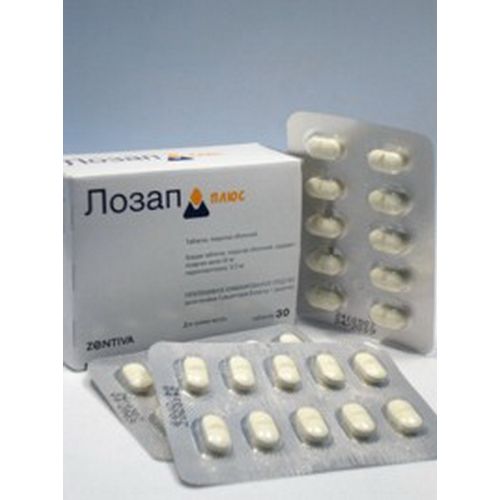
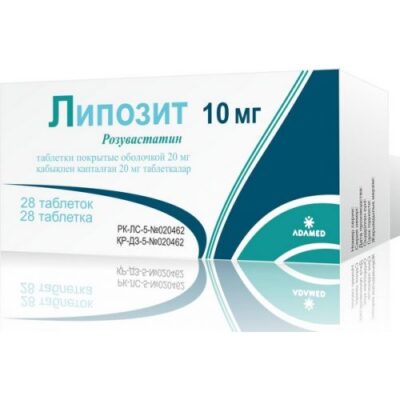
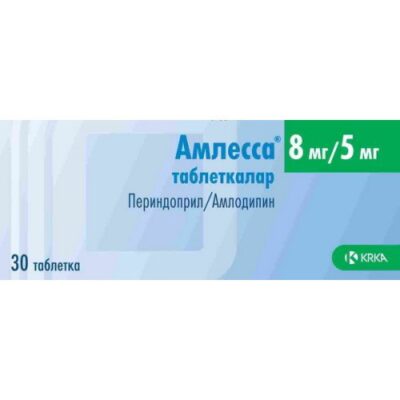
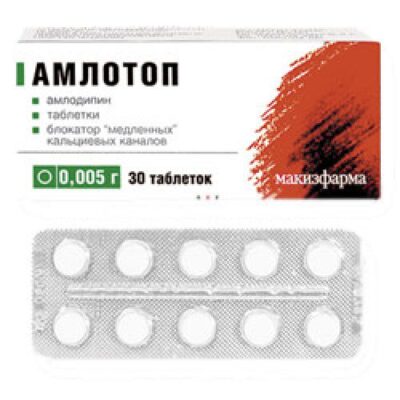
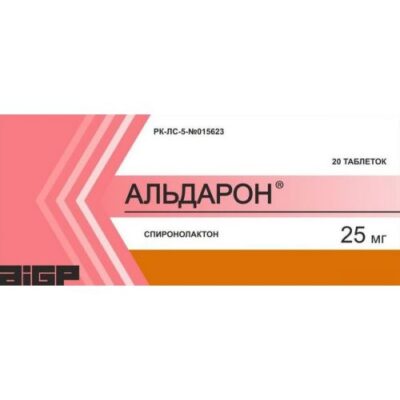
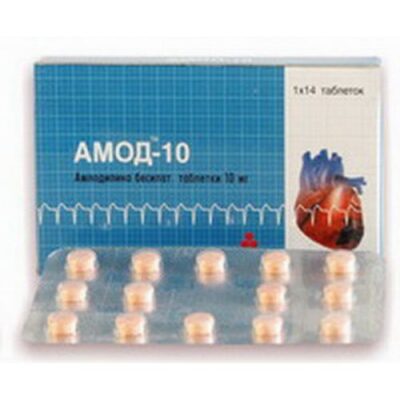
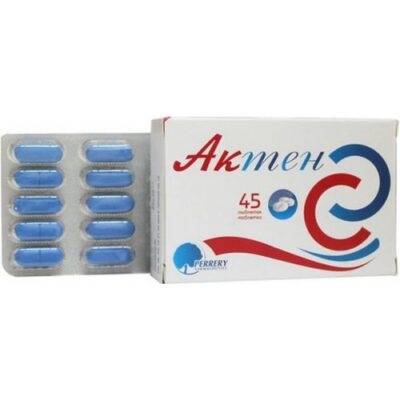
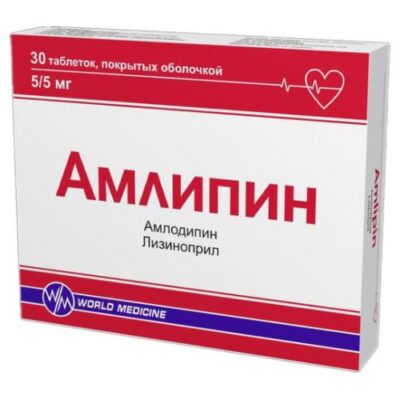
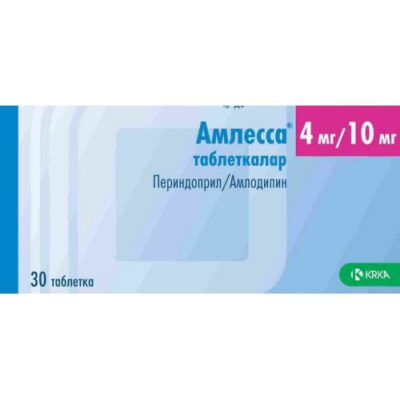
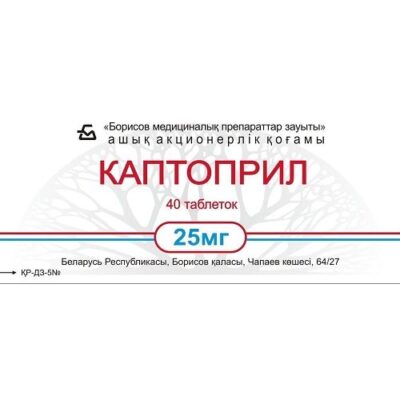







Reviews
There are no reviews yet.